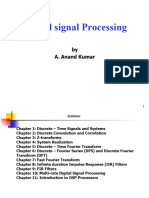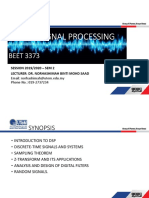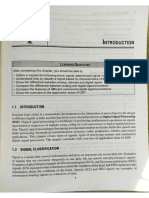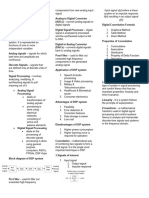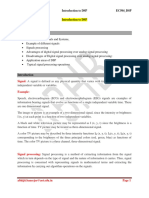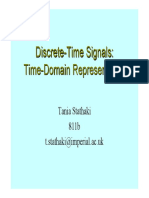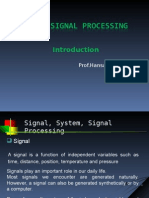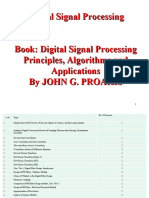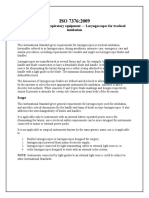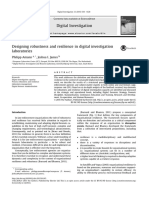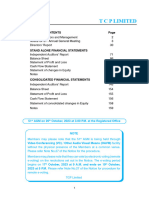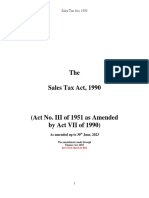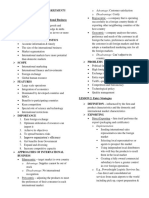Digital signal Processing
by
A. Anand Kumar
1
� Syllabus
Chapter 1: Discrete – Time Signals and Systems
Chapter 2: Discrete Convolution and Correlation
Chapter 3: Z-transforms
Chapter 4: System Realization
Chapter 5: Discrete – Time Fourier Transform
Chapter 6: Discrete – Fourier Series (DFS) and Discrete Fourier
Transform (DFT)
Chapter 7: Fast Fourier Transform
Chapter 8: Infinite duration Impulse Response (IIR) Filters
Chapter 9: FIR Filters
Chapter 10: Multi-rate Digital Signal Processing
Chapter 11: Introduction to DSP Processors
2
� Discrete-Time Signals and Systems
Introduction
Representation of Discrete-time Signals
Elementary Discrete-time Signals
Basic Operations on Sequences
Classification of Discrete time signals
Classification of Discrete time system
3
� Systems
Signals: Any physical phenomenon that carries or convey
information from one place to other and represents as a function of
independent variables such as time, temperature, position, pressure,
distance etc.
One Dimensional Signals: Function depends on a single variable i.e.
speech signal
Multi-dimensional Signals: function depends on two or more variable
i.e. image
Analog Signal: Continuous with independent variable
Digital Signal: Discrete with independent variable
4
� System
Systems process input signals to produce output signals
A system takes a signal as an input and transforms it into another
signal:
System is a cause and effect relation between two or more signals
A systems may be single input and single output or multiple input
multiple output systems.
5
� What is signal Processing
Signal Processing is a method of extracting information from the
signal which in turn depends on the type of signal and the nature of
information it carries.
Signal Processing is the analysis, interpretation and manipulation of
like sound, images, time-varying measurement values and sensor
data etc.
Types of Signal:
Analog Signal Processing
Digital Signal Processing
The short form of digital signal processing is called DSP
6
� Digital Signal Processing
Digital signal processing has so many advantages over analog signal
processing. Some of these are given below:
Digital circuits do not depend on precise values of digital signals for
their operation. Digital circuits are less sensitive to changes in
component values and to variations in temperature, ageing and
other external parameters.
In a digital processor, the signals and system coefficients are
represented as binary words. This enables one to choose any
accuracy by increasing or decreasing the number of bits in the binary
word.
Digital processing of a signal facilitates the sharing of a single
processor among a number of signals by time sharing. This reduces
the processing cost per signal.
Digital implementation of a system allows easy adjustment of the
processor characteristics during processing.
7
� Digital Signal Processing
Linear phase characteristics can be achieved only with digital filters.
Also multi-rate processing is possible only in the digital domain.
Digital circuits can be connected in cascade without any loading
problems, whereas this cannot be easily done with analog circuits.
Storage of digital data is very easy. Signals can be stored on various
storage media such as magnetic tapes, disks and optical disks
without any loss. On the other hand, stored analog signals
deteriorate rapidly as time progresses and cannot be recovered in
their original form.
Digital processing is more suited for processing very low frequency
signals such as seismic signals.
8
� Limitations Digital Signal Processing
Though the advantages of DSP systems are many but some limitations
are associated with DSP systems.
Complexity
Frequency Limitations
Consuming power is more
Reliability
9
� Block diagram of Digital Signal Processing
The block diagram of a DSP system :
10
� Applications of Digital Signal Processing
DSP has many applications. Some of these are:
Speech processing
Communication
Biomedical
Consumer electronics
Seismology
Image Processing
11
� Representation of discrete time signals
Discrete-time signals are signals which are defined only at discrete
instants of time. For discrete-time signal the independent variable is
time n, and it is represented by x(n).
There are following four ways of representing discrete-time signals:
1. Graphical representation
2. Functional representation
3. Tabular representation
4. Sequence representation
12
� Graphical Representation
Consider a signal x(n) with values
X(-2)=-3, x(-1)=2, x(0)=0, x(1)=3, x(2)=1 and x(3)=2
This discrete-time signal can be represented graphically as shown in Figure
1.2.
13
� Functional Representation
In this, the amplitude of the signal is written against the values of n. The signal
given in section 1.2.1 can be represented using the functional representation
as follows:
14
� Tabular Representation
In this, the sampling instant n and the magnitude of the signal at the
sampling instant are represented in the tabular form. The signal given
in section 1.2.1 can be represented in tabular form as follows:
15
� Sequence Representation
A finite duration sequence given in section 1.2.1 can be represented as follows:
16
� Sum and product of discrete-time sequences
The sum of two discrete-time sequences obtained by adding the
corresponding elements of sequences
The sum of two discrete-time sequences obtained by adding the
corresponding elements of sequences
The multiplication of a sequence by a constant k is obtained by multiplying
each element of the sequence by that constant.
17
